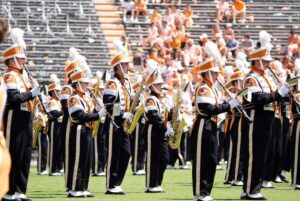
Pittsburgh, Pennsylvania, is a city that has undergone a remarkable transformation over the past century. Once known as the “Steel City” for its booming steel industry, Pittsburgh has evolved into a vibrant hub of technology, education, and culture. Central to this evolution are three iconic symbols: its historic steel mills, the legendary Three Rivers Stadium, and the formidable Pittsburgh Steelers. Together, these elements encapsulate the city’s industrial past, its sporting legacy, and its enduring spirit.
The Rise and Fall of Pittsburgh’s Steel Industry
In the late 19th and early 20th centuries, Pittsburgh was the epicenter of America’s steel production. The city’s strategic location at the confluence of the Allegheny, Monongahela, and Ohio Rivers provided easy access to raw materials and transportation routes. This geographical advantage, combined with the advent of the Bessemer process—a method for producing steel by blowing air through molten iron—allowed Pittsburgh’s steel industry to flourish.
Prominent steel magnates like Andrew Carnegie established vast steel mills in the region, with the Edgar Thomson Steel Works being one of the most notable. Located in Braddock, just outside Pittsburgh, this mill became a symbol of industrial might. The mill’s proximity to the Monongahela River facilitated the transportation of raw materials and finished products, further cementing Pittsburgh’s status as the steel capital of the world .
However, the mid-20th century brought challenges. Global competition, technological advancements, and shifts in industrial practices led to the decline of the steel industry in Pittsburgh. By the 1970s and 1980s, many mills had closed or downsized, leading to significant economic hardship for the city. The once-thriving steel mills became relics of a bygone era, their smokestacks now silent monuments to Pittsburgh’s industrial heritage.
Three Rivers Stadium: The Heartbeat of Pittsburgh Sports
Amidst the industrial boom, Pittsburgh’s sports culture also flourished. The city’s passion for baseball and football found a home in the iconic Three Rivers Stadium. Opened in 1970, Three Rivers Stadium was uniquely designed to accommodate both the Pittsburgh Pirates (baseball) and the Pittsburgh Steelers (football). Its location at the confluence of the city’s three rivers gave the stadium its name and provided a picturesque backdrop for countless memorable moments.
For the Steelers, Three Rivers Stadium was more than just a venue; it was a fortress. The team enjoyed a remarkable record during their tenure there, with multiple playoff appearances and four Super Bowl victories in the 1970s. The stadium witnessed the birth of the “Steel Curtain” defense and iconic plays like the “Immaculate Reception,” solidifying its place in NFL history .
Beyond football, Three Rivers Stadium hosted significant events, including concerts, soccer matches, and even the 1994 MLB All-Star Game. Its dual-purpose design and central location made it a focal point of Pittsburgh’s sports and entertainment scene.
The Pittsburgh Steelers: A Legacy of Excellence
The Pittsburgh Steelers, founded in 1933 by Art Rooney, have become synonymous with the city’s identity. Initially struggling, the team found its footing in the 1970s under the leadership of head coach Chuck Noll. Noll’s strategic acumen and emphasis on building through the draft led to the formation of a dynasty that would dominate the NFL for decades.
Key players like Terry Bradshaw, Franco Harris, “Mean” Joe Greene, and Lynn Swann became household names, leading the Steelers to four Super Bowl titles in six years. Their success was built on a foundation of hard-nosed defense, disciplined offense, and a relentless work ethic—traits that mirrored the city’s own blue-collar ethos .
The team’s legacy continued into the 21st century. With six Super Bowl championships, the Steelers share the record for the most in NFL history. Their consistent success, passionate fanbase known as “Steeler Nation,” and commitment to community have solidified their status as one of the most respected franchises in professional sports .
The Transformation: From Steel to Silicon
As the steel industry declined, Pittsburgh faced the challenge of reinventing itself. The city leveraged its strong educational institutions, including Carnegie Mellon University and the University of Pittsburgh, to pivot towards technology and healthcare. Pittsburgh became a hub for robotics, artificial intelligence, and biomedical research, attracting companies like Google, Uber, and Intel to establish research centers in the city.
Simultaneously, efforts were made to revitalize Pittsburgh’s riverfronts. The development of the Three Rivers Park system transformed former industrial sites into vibrant public spaces. Spanning over 13 miles, the park offers trails, green spaces, and recreational areas that connect the city’s neighborhoods to its rivers, fostering a renewed sense of community and pride .
Pittsburgh’s journey from an industrial powerhouse to a modern metropolis is a testament to its resilience and adaptability. The steel mills, Three Rivers Stadium, and the Steelers are not just historical footnotes; they are integral parts of the city’s narrative. They represent an era of hard work, community spirit, and a relentless pursuit of excellence. As Pittsburgh continues to evolve, it honors its past while embracing the future, ensuring that the legacy of the Steel City endures for generations to come.





